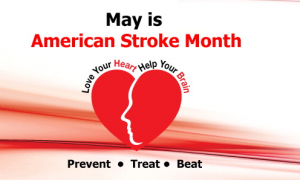What is a congenital heart defect?
- Congenital heart defects (CHDs) are problems with the heart’s structure that are present at birth.
- Common examples include holes in the inside walls of the heart and narrowed or leaky valves. In more severe forms of CHDs, blood vessels or heart chambers may be missing, poorly formed, and/or in the wrong place.
How common are congenital heart defects?
- CHDs are the most common birth defects. CHDs occur in almost 1% of births.
- An approximate 100-200 deaths are due to unrecognized heart disease in newborns each year. These numbers exclude those dying before diagnosis.
- Nearly 40,000 infants in the U.S. are born each year with CHDs.
- CHDs are as common as autism and about twenty-five times more common than cystic fibrosis.
- Approximately two to three million individuals are thought to be living in the United States with CHDs. Because there is no U.S. system to track CHDs beyond early childhood, more precise estimates are not available.
- Thanks to improvements in survival, the number of adults living with CHDs is increasing. It is now believed that the number of adults living with CHDs is at least equal to, if not greater than, the number of children living with CHDs.
What is the health impact of congenital heart defects?
- CHDs are the most common cause of infant death due to birth defects.
- Approximately 25% of children born with a CHD will need heart surgery or other interventions to survive.
- Over 85% of babies born with a CHD now live to at least age 18. However, children born with more severe forms of CHDs are less likely to reach adulthood.
- Surgery is often not a cure for CHDs. Many individuals with CHDs require additional operation(s) and/or medications as adults.
- People with CHDs face a life-long risk of health problems such as issues with growth and eating, developmental delays, difficulty with exercise, heart rhythm problems, heart failure, sudden cardiac arrest or stroke.
- People with CHDs are now living long enough to develop illnesses like the rest of the adult population, such as high blood pressure, obesity and acquired heart disease.
- CHDs are now the most common heart problem in pregnant women.
What causes congenital heart defects?
- Most causes of CHDs are unknown. Only 15-20% of all CHDs are related to known genetic conditions.
- Most CHDs are thought to be caused by a combination of genes and other risk factors, such as environmental exposures and maternal conditions. Because the heart is formed so early in pregnancy, the damage may occur before most women know they are pregnant.
- Environmental exposures that may be related to risk of having a CHD include the mother’s diet and certain chemicals and medications. Maternal diabetes is a recognized cause of CHDs. Maternal obesity, smoking, and some infections also may raise the risk of having a baby with a CHD. Preventing these risk factors before a pregnancy is crucial.
- A baby’s risk of having a CHD is increased by 3 times if the mother, father, or sibling has a CHD.


